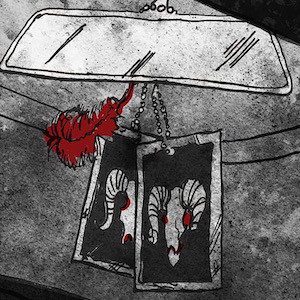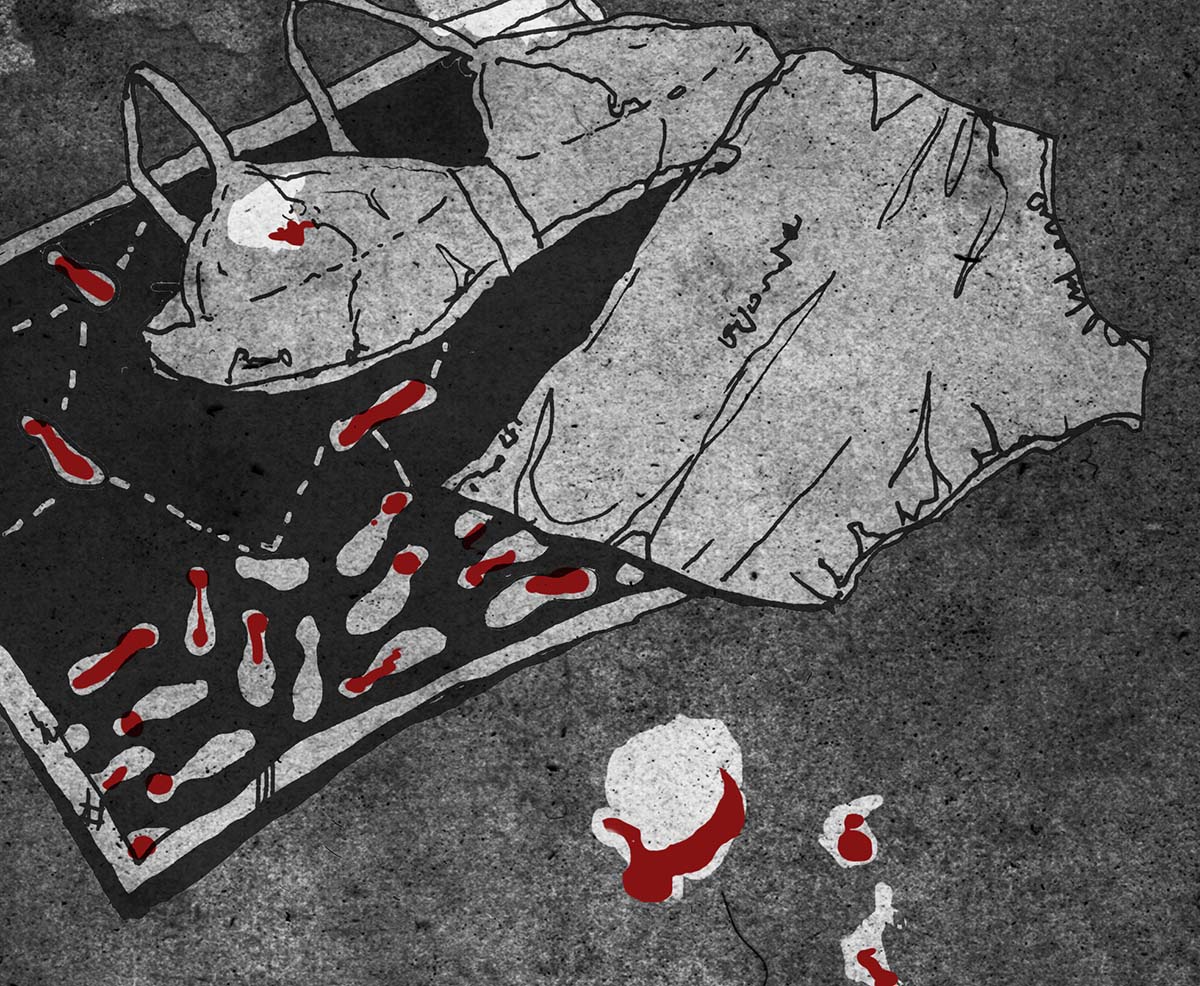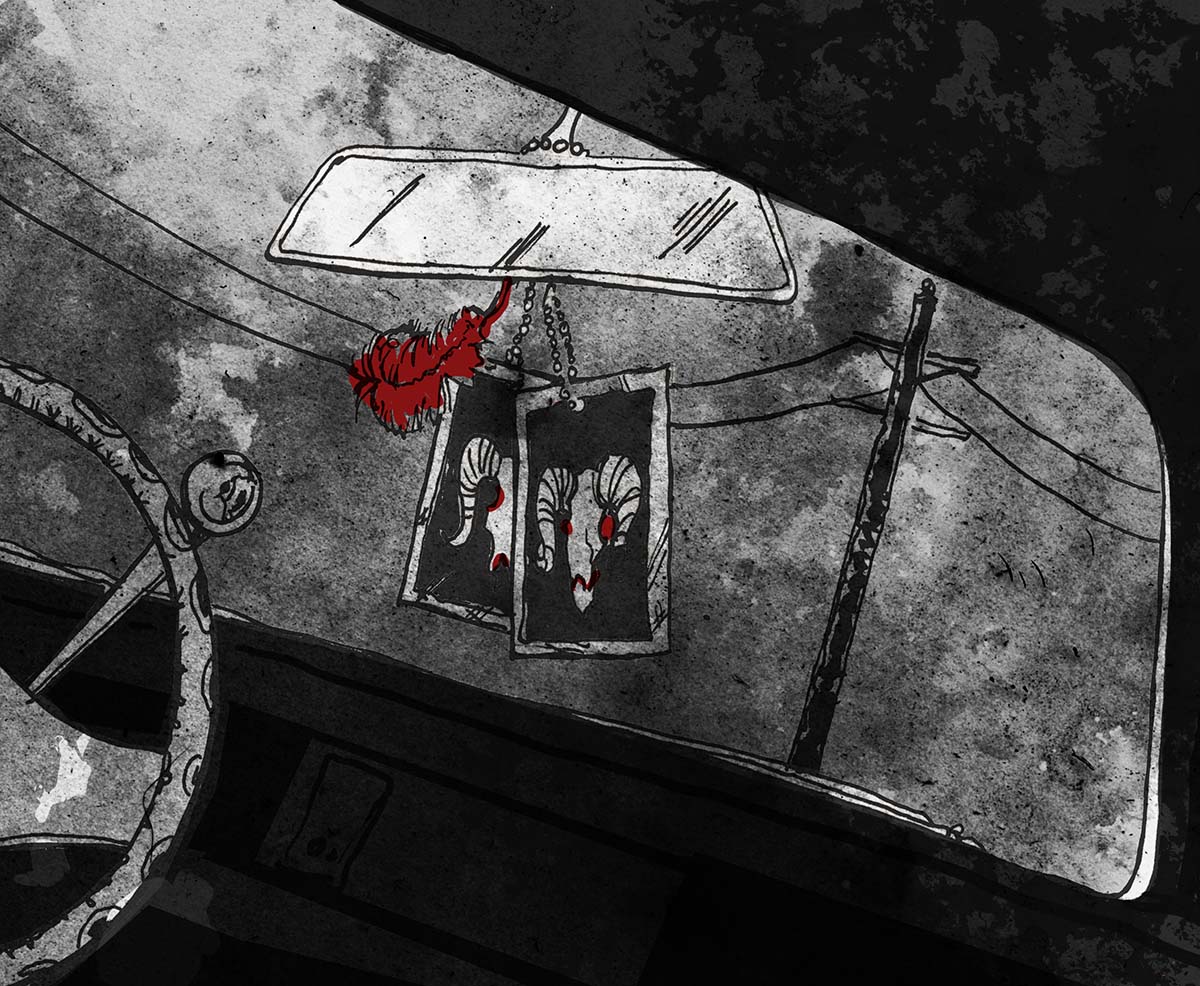
I am not surprised when, upon finishing a self-guided tour of the Museum of Death in New Orleans, I find myself privy to a pissing contest between the proprietors, JD and Scott, over which of them has the better necrophilia story. Not their own stories, but ones they’ve heard over the years working at the original Hollywood Museum of Death. Nor am I surprised when I see a row of jars containing fetal pigs, shanks confiscated from the Oklahoma State Penitentiary Death Row, and a shrunken human head. These are to be expected when one pays $15 to enter a French Quarter museum that sells a t-shirt printed with the illustrated faces of Charles Manson, Aileen Wournous, and John Wayne Gacy—in clown costume.
What strikes me is not the necrophilia or the fetal pigs or the spoon designed for scooping out human brain matter, but rather the mundane. A kitschy greeting card featuring a typewriter and vase of roses with the words “Let’s Keep in Touch…” signed by “Jeff Dahmer.” Inside a glass display case, Aileen Wuornos’s bra and panties. White, slightly browned, from dirt or wear, the kind that tightens at your belly button, the kind you may have seen in your mother’s or grandmother’s laundry room, the kind that makes you forget about sex. The underwear is unsettling in the way that Dr. Kevorkian’s original Thanatron machine, a.k.a. suicide machine, is undeniably DIY, the wood and metal held together by the same screws and bolts found at your local Ace Hardware.
In the rear of the museum, I find myself sitting down on a velvet-covered church pew to watch a film reel of people meeting their ends, which the curators have decided to overlay with jovial ragtime music. This is Traces of Death, which is not to be confused with the better-known Faces of Death, a 1978 mondo film that consists primarily of reenactments of death.1 Traces is the real thing. I watch as a crowd of people in some place and time stands in a circle around two decapitated bodies laid prone, the children in the group perhaps encountering death for the first time, as a firing squad takes aim and shoots, as bloated bodies float in some muddy body of water. We do not know where or when these videos were shot, who these people were, what wars or natural disasters led to their demise. The only orienting force, the motif across all of these videos, is death.
After the tour, I suggest to JD that it would be revealing to install a camera in the theater to capture viewers’ reactions to the film.
“You should see the guest book.”
He brings out a spiral-bound notebook and flips to a page featuring an undeniably well-wrought illustration of Charles Manson choking Hitler. The accompanying note commends the museum for providing excellent masturabatory fodder. He flips through the book, showing me other visitors’ shared sentiments.
“I’ve walked in on people hooking up back there. Some people stay an hour and half. Or more. The video just loops, you know.”
A place like this attracts a certain type of sexual deviant. But there are others who sit and watch those scenes out of some other curiosity.
Earlier this year, in his “On Photography” column, Teju Cole considered the videos of the murders of Walter Scott, Eric Garner, Tamir Rice, and the ISIS beheadings:
I recognized the political importance of the videos I had seen, but it had also felt like an intrusion when I watched them: intruding on the grief of those for whom the deaths were much more significant, and intruding, too, on my own personal but unarticulated sense of right and wrong.
Traces offers little political significance to justify its viewing; in watching, you are not necessarily educating yourself on some historical moment by watching a man, alive, his limbs outstretched in bondage, have his hand cut off, his body falling limp at the apotheosis of physical pain.
And here’s the other issue, according to Cole. In Traces of Death, more so than in the politically charged videos of Walter Scott and James Foley, instead of honoring the individual who has passed, the character you are celebrating is Death itself. Cole writes: “when you see death mediated in this way, pinned down with such dramatic flair, the star is likely to be death itself and not the human who dies.”
Cole says this as if it were 100% problematic. But maybe stories in which Death is cast as protagonist should not be written off entirely as insensitive histrionics. What’s interesting about Traces of Death—and the Museum of Death generally—is how this character of Death intrudes upon the pedestrian. On one wall, an arrangement of black-and-white photos features bodies sprawled along car seats, falling from the benches of old trucks, the dented vehicles like movie props. My mind wanders to what the deceased woman once did in the totaled Chevy, the songs she sang driving her children to school, the summer that she and her husband made love in the backseat, shrouded by some Appalachian foliage. As Cole writes, these indicators of a life once lived are, perhaps, the real shock, and by that I mean jolting, a call to awakening: “This was not only the scene of a crime. It also made visible things that were not apparent in the video, the last view Scott saw, the exit from the lot, the unnerving quietness of the area, the banality of dying in a side lot off a side street in an unremarkable town.” Wake up, these videos seem to insist: death is as much a part of living as that postprandial drive through the country, the taste of her lips, the excitement at the pair of Hanes right out of the package.
“Have a nice life,” JD calls, as I walk out the door and back into the city.
***
1. The history of Faces of Death is rather interesting, for those not instinctively repelled by this type of thing. To create the movie, the film’s editor, Glenn Turner (“James Roy” in the credits) says the filmmakers first went to local news stations and bought boxes of footage shot by “ambulance drivers” and linked the scenes together to create a “documentary.” But Japanese financiers weren’t satisfied with their product, which showed only the aftermath of the crime scenes; they wanted the whole story, the beginning, middle and end of death. So they recreated the scenes, matching lighting and shaky filming styles, to produce reenactments of train accidents, police standoffs, etc.↩
***
Rumpus original art by Kara Y. Frame.
***
Want more R.I.P.? Visit the archives here.






